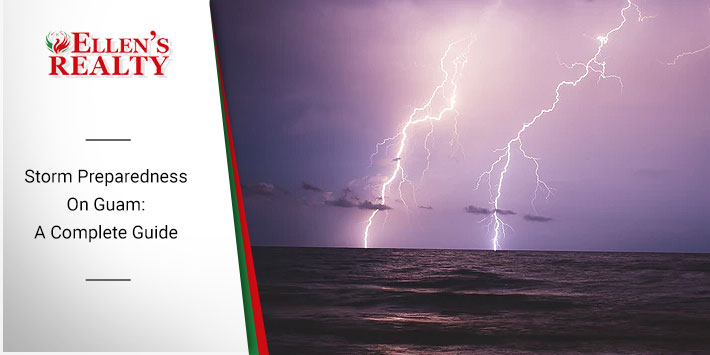Storms or typhoons can be windy, wet and even wild. They can cut off power and water, uproot trees and power lines. They can topple over cars, tear portions of roof off homes and buildings. They can even turn simple, harmless things, like a pail or a garbage can lid into dangerous flying objects.
The North Pacific Ocean is perhaps the most vulnerable part of the world when it comes to being affected by typhoons. Guam is an island right in the front, heart and center of this vulnerability because the sun shines long and bright over the ocean in the summer. These typhoons are not to be taken lightly.
DEVELOP AN EMERGENCY PLAN
Before anything else, learn about the different types of emergencies affecting your community, notification procedures (warning system via tv, radio or alarm) in case of an event and if systems are already available to deal with these events. Once you’ve become acquainted with the pre-existing procedures, you can now take steps in creating your own household emergency plan:
- Meet with each member of your household and discuss the dangers of possible events.
- Assign roles to each family member, where one is assigned to secure the pets, another to make sure outdoor furniture and equipment are secure, etc.
- Discuss what to do during power outages or personal injuries.
- Have a floor plan of your home and mark 2 escape routes from each room.
- Make sure the adult members of your household learn how to turn off water, gas and electricity on the main switches.
- Emergency contact numbers must be posted near all telephones, pre-program emergency numbers into each one’s mobile phone.
- Designate a friend or a family relative that all family members will call if separated during an emergency.
- Decide on 2 meeting places–near your home, outside your neighborhood or off-island–in case you can’t return home after an emergency.
- Equip yourself with a basic First Aid or CPR class.
- Keep family records in a safe that’s both waterproof and fireproof.
PREPARE A DISASTER EMERGENCY KIT
Usually during emergencies, electricity, water, heat, air conditioning or telephone service may not be available. Preparing a Disaster Emergency Kit ahead of time can be very valuable in the event you need to evacuate or go without water or electricity for a while.
Your kit should include:
- A minimum of 3-day supply of water (a gallon per person per day). Make sure to store in a sealed and unbreakable container. Replace every 6 months.
- 3 to 5 days supply of packaged or canned food, along with a non-electric can opener.
- Some clothes, rain gear and durable shoes.
- Blankets or sleeping bags.
- A basic first aid kit and some prescription medication (check the expiration dates).
- Items for infants, family members with disabilities or the elderly.
- Credit cards, cash, identification and copes of important documents, including home insurance information.
- A set of tools like screwdrivers, scissors and cutters, some duct tape, flares, waterproof matches, plastic storage containers, a basic sewing kit, pen and paper, compass and garbage bags.
The right time to plan and prepare is long before the storm season. An emergency can happen quickly and without warning. The best thing you can do to keep yourself and your family safe is to be prepared.
It is also advisable to get in touch with your property management service provider to help you with planning and preparation.

